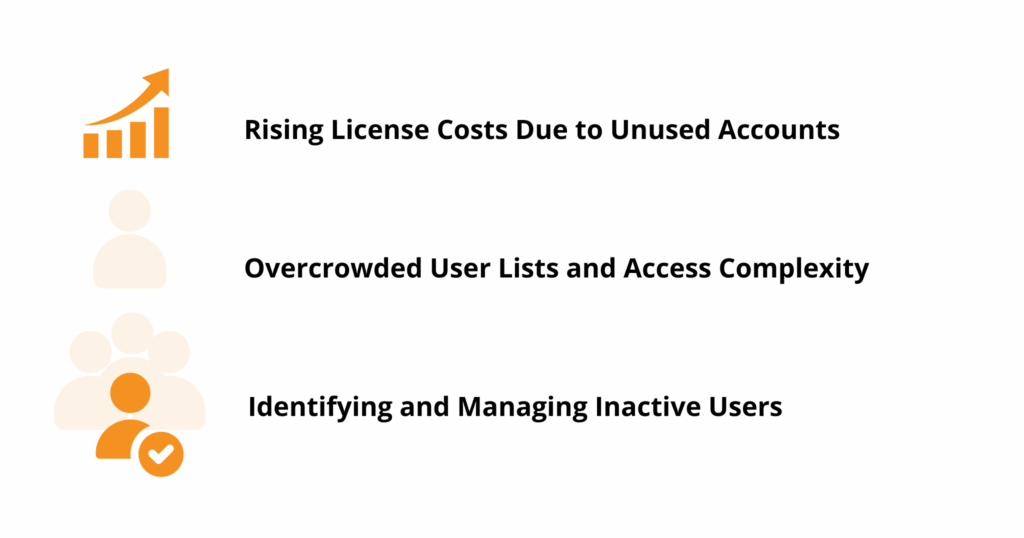Managing Jira with hundreds or even thousands of users can quickly become overwhelming. Inactive accounts quietly consume licenses, tangled group structures slow things down, and licensing costs keep climbing. Without a clear strategy, these inefficiencies add up, leading to wasted budget, bloated admin work, and security risks.
This guide will help you regain control. You’ll discover practical steps to optimize user management, cut unnecessary license costs, and simplify access control. From deactivating dormant accounts to cleaning up group chaos and automating routine tasks, we’ll show you how to make your Jira instance lean, secure, and cost-effective.
Identifying and Managing Inactive Users. Why It Matters?
First, we should start with this: effective user management isn’t just about saving money, it’s about keeping your Jira instance lean, fast, and secure. Whether you’re dealing with legacy accounts, bloated permissions, or compliance gaps, a smart approach to user management helps Jira run more efficiently and safely.
Inactive users are a hidden drain. As teams evolve, people leave, and projects shift, outdated accounts often remain, silently consuming licenses and cluttering your instance. Without structure, these accounts contribute to higher costs, unnecessary complexity, and increased security risks.
Manually identifying and managing these users can be time-consuming and error-prone. Without full visibility into who’s active and who isn’t, admins are forced to guess — and often guess wrong. And if offboarding isn’t handled properly, former employees or contractors can retain access longer than they should, opening the door to compliance issues.
Challenges in Managing Large User Bases in Jira
As the number of users grows, so do the challenges. Jira administrators constantly navigate a shifting landscape, and without proper oversight, things can spiral fast. If left unmanaged, these issues lead to performance slowdowns, rising costs, and increased security vulnerabilities.
Here are the most common roadblocks:

Rising License Costs Due to Unused Accounts
Every inactive or unnecessary account still incurs a licensing cost. Without a structured user management process, organizations often pay for unused licenses, unnecessarily inflating IT expenses.
Overcrowded User Lists and Access Complexity
As the user base expands, user lists become cluttered, making it harder to manage permissions and quickly identify active users. This can lead to mismanaged access, redundant permissions, and increased security risks.
Identifying and Managing Inactive Users
As teams grow and change, users move between projects, leaving behind inactive accounts that continue to consume licenses. Identifying and deactivating these accounts is essential for cost efficiency but can be a tedious, time-consuming task without automation.
Best Practices for User and License Management in Jira
To avoid falling into these traps, Jira administrators need more than reactive cleanups, they need a proactive, structured approach. By following proven best practices, you can regain control, reduce costs, and build a more efficient, secure environment.
Here are the key strategies for effective user and license management in Jira:
Conduct Regular User Audits
✅ Monitor user login patterns to identify inactive accounts.
✅ Define clear inactivity thresholds (e.g., deactivation after six months of inactivity).
✅ Review temporary access accounts periodically
Optimize Group and Permission Structures
✅ Implement Role-Based Access Control (RBAC) to assign roles based on job functions.
✅ Regularly review and consolidate groups to eliminate redundancies.
✅ Leverage nested groups to simplify large team access management.
Automate User Management Processes
✅ Implement automation tools to track and deactivate inactive users.
✅ Establish an offboarding workflow to revoke access promptly when employees leave.
✅ Utilize Jira Marketplace apps for enhanced automation and efficiency.
Implement Cost-Effective License Management Strategies
✅ Track license utilization trends to identify optimization opportunities.
✅ Define policies for upgrading or downgrading user access tiers based on role needs.
✅ Utilize automation to ensure organizations only pay for active users.
Summary
Managing a growing Jira instance isn’t just about staying organized, it’s about protecting your budget, your performance, and your security. Inactive accounts, cluttered group structures, and rising license costs are common problems that, if left unchecked, can spiral into serious inefficiencies.
The key is a proactive, systemized approach. By regularly auditing users, simplifying access structures, automating offboarding, and monitoring license usage, Jira admins can take back control and keep their instance lean and scalable.
In the next part of this guide, we’ll dive deeper into the tools and automation techniques that make this process faster, easier, and more reliable.


